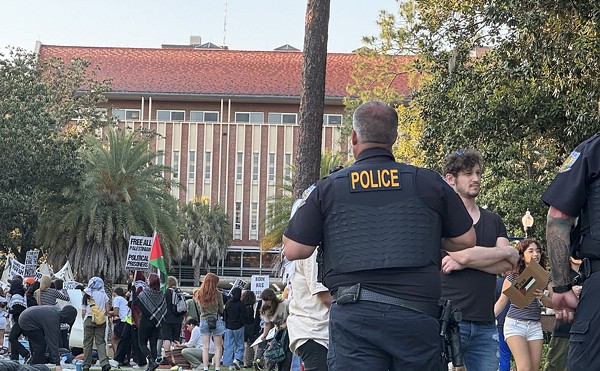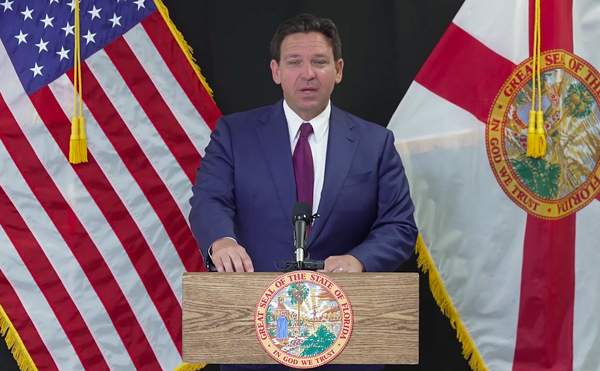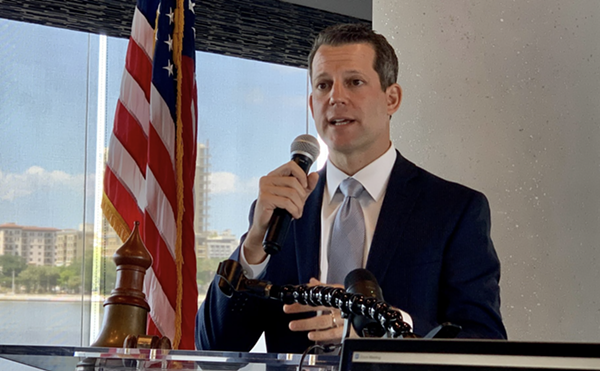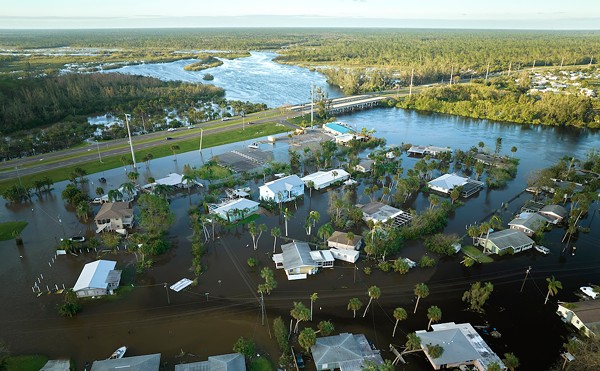Throughout this campaign season, Bill Foster has been saying that one reason he should be re-elected is that downtown St. Petersburg is thriving, with a half billion dollars in construction projects on the way. Those who support replacing St. Pete’s venerable waterfront pier with the futuristic Lens see it as a piece of the Burg’s insurgent ascendancy.
But obviously, not everyone agrees. In fact, if the polling is accurate, the Lens as constituted may never become a reality. If that turns out to be the case, there will be plenty of Monday morning quarterbacking after the Aug. 27 vote. In fact, it’s already happening.
But to understand the intense opposition to the plan, it helps to realize that there were thousands of people in St. Pete against the Lens before it even existed.
In August of 2010, after 14 months and 63 public meetings, the Pier Advisory Task Force (a group of 20 civic leaders chosen by the mayor and St. Petersburg City Council) recommended that an international design contest be held to create a replacement for the aging structure, which costs the city $1.5 million a year to maintain.
By that time, Tom Lambdon was already getting busy.
The Safety Harbor resident, who had famously floated the idea of replacing the pyramid with a roller coaster, was angry about what he felt was a lack of true public input on such an important community asset. With very few major allies other than City Councilman Wengay Newton and former Councilmember Kathleen Ford (along with the hundreds of employees at the Pier who realized that the new plan called for them to lose their jobs), he founded savethepier.org and set up an action committee called Vote on the Pier to begin the slow process of gathering signatures to get the issue on a city ballot.
Meanwhile, the city was zooming ahead. A jury (Stanley Saitowitz, the renowned architect who created the Tampa Museum of Art; Susan Fainstein, a Harvard urban planning professor; Tampa architect and urban planner James Moore; and Pinellas politicos Ken Welch and Leslie Curran) was tasked with choosing a design. They whittled down the field of applicants to nine and finally to three choices — the Wave (an Inception-inspired vision of a city skyline curling onto itself from TED starchitect Bjarke Ingels); the Eye (a sea urchin-like structure by West 8 Urban Design); and the Lens, a dramatic loop by L.A.-based Michael Maltzan Architecture. The panel selected Maltzan’s Lens, citing its flexibility, beauty and cost-effectiveness.
Supporters of the Lens, like Chamber of Commerce President Chris Steinocher, say it sustains the momentum led by the waterfront boom on St. Pete’s buzzy Beach Drive. “St. Pete is a hot destination,” he says. “We saw the Lens as just one of those kinds of things that symbolizes what this city is all about — a beautiful structure of art, a beautiful place to get out in the water and see your community and walk about and sit about.”
But despite the support engendered by the Lens at first — 68 percent of public comment favored it over the other designs — the good feelings didn’t last.
In many ways, the argument about the Lens could be portrayed as generational — a standoff between those who cling to tradition vs. those who are looking ahead. Stop the Lens, the frankly anti-Lens movement that launched a Facebook page in 2012, went for nostalgia right away with photos of the old Million Dollar Pier. The group’s website offered this sniffy critique of the Lens aesthetic: “Our history and unique identity do not include extravagant exhibitionism. The Lens is a fine piece of art. It might be a worthy symbol of the City of Dubai, UAE (United Arab Emirates). The Lens is not a worthy symbol of St. Petersburg, Florida, USA.”
But the dichotomy gets a bit muddled when you consider that some of the city’s most progressive voices, such as Darden Rice, Karl Nurse, and Rick Kriseman, stand with the Stop The Lens contingent — and coincidentally are all on the ballot next week in their respective races for city council and mayor.
Nurse is an interesting case. The Council chair initially supported the Lens concept, saying it was the best of the three. But he says he quickly felt it wouldn’t work, and criticizes some of the choices that Michael Maltzan made.
“To not have any air-conditioned space shows ignorance of the temperature here,” he says, repeating a familiar criticism. “There’s almost nothing at the end [of the Pier],” adding, “they had to change the materials because they were too expensive.”
An overriding aim of city leaders was to find a way to reduce the annual subsidy to the pier; amenities like air-conditioning cost money. And even though critics stress that no one will hang out at the new Pier if there’s no relief from the heat, no one’s been hanging out there much for years, and that was with a-c.
















